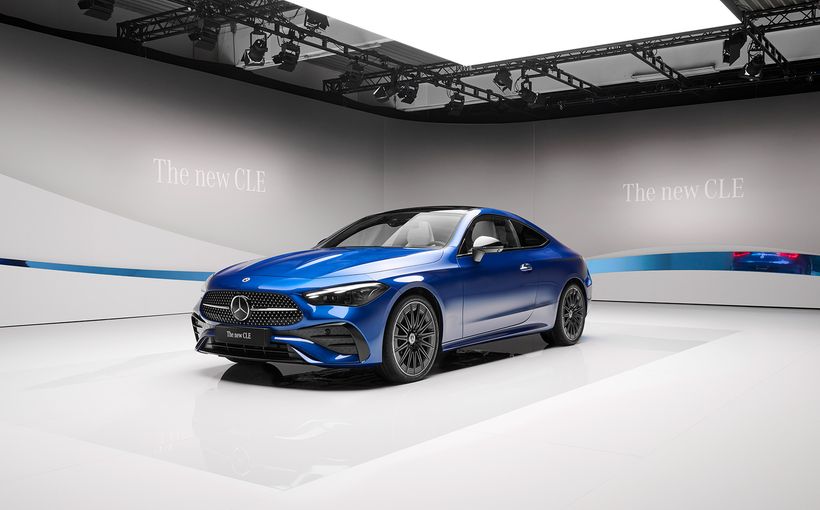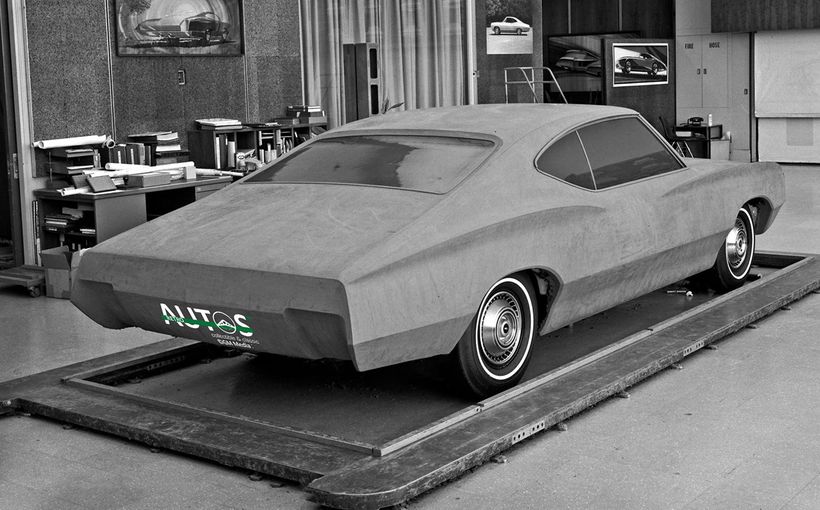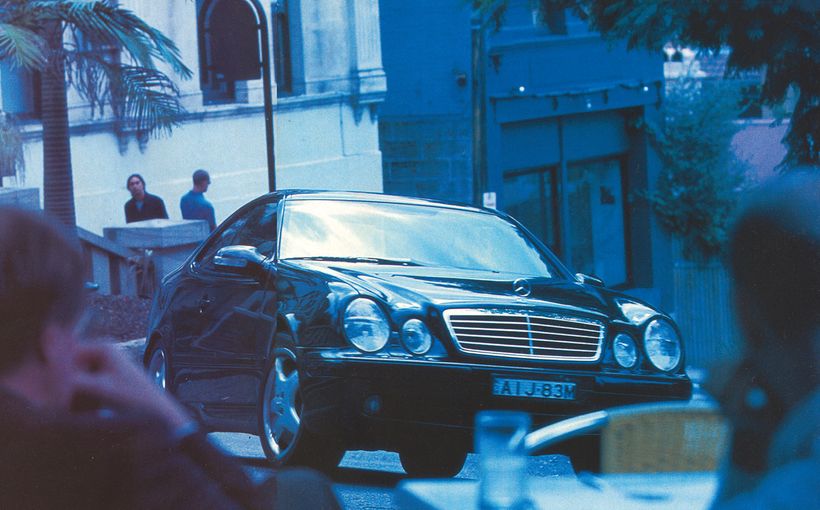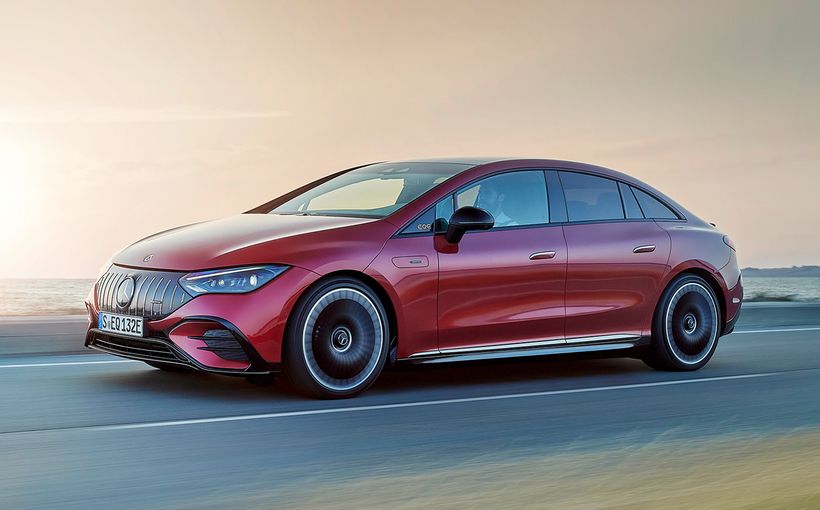Mercedes-Benz 190E: small car standard for the world

From the moment I slipped behind the wheel of the Mercedes-Benz 190E, I understood that there was an entirely new type of small car. Even that adjective ‘small’ needs to be calibrated because the W201 190E was not small in the way of a Toyota Corolla and at almost 4.5 metres in length, it could perhaps have been technically described in January 1985 as medium. Nevertheless, for a luxury car it was certainly small and the first Mercedes sedan of this type since the W120 190 sedan of 1956-1962.

While ostensibly the new four-cylinder Mercedes-Benz was a rival for BMW’s 318i, it was the result of a different kind of philosophy and, despite many journalists’ opinions about the car being overpriced, buyers experienced few such doubts. Simply, the W201 was developed from day one to feel exactly like a larger Mercedes in terms of quality and the driving/ownership experience. The same could not be said of the 318i in comparison with its larger sibling, the buffalo-hide trimmed 735i flagship.
Looking back, it seems reasonable to suggest that the question of vehicle size did receive a more concentrated focus during the late 1970s and early 1980s, as realisation dawned that fuel would continue getting dearer and that there would be problems of supply. To downsize (like Holden with the Commodore) or not (like the XD Falcon compared with its XC predecessor)?
I remember Ford Australia boss Bill Dix remarking snidely that he could just about tell the difference between a Commodore and a Camira and it was true that both Holdens used the same design language out of Opel. But they were perhaps a bit too close in size. Ford had no such problem with people confusing a Telstar with an all-Aussie Falcon. Bill Dix was subtly suggesting again the XE Falcon’s) size advantage over the first generation Commodore.

The 190E was unmistakably a Mercedes-Benz but there was never any danger of confusing it with one of its larger siblings. It was actually the first expression of a new theme that would be seen the following year in the midsize W124 models.
Probably the adjective that best explains the difference in feel between the 190E and a 318i is ‘solid’. I found it perplexing that although the view down to the bonnet to the three-pointed star was so obviously shorter than in my experience, the car felt exactly the same, but slower. It was difficult to believe that the weight was only 1200kg.
In the search for improved fuel economy, designers pursued aerodynamics more seriously. The first car to highlight its low drag factor was the Audi 100 CD (where the initials actually stood for Corps Diplomatique, not Coefficient of Drag!), the undoubted star of the 1982 Paris Salon.
That Audi was one of my hero cars of the time and I would subsequently own two of them and, later again, a 200 Turbo. (I would also own a 180E.) I don’t ever remember thinking that the new Mercedes felt more solid and all-of-a-piece than the Audi but it undeniably did. Secondary (crash) safety was yet to be the priority with all automotive manufacturers that it would become by the end of the 1980s – and had long been at Daimler-Benz, Volvo, Saab and a few others – and the Audi was certainly not as strongly constructed as the W201.
The 318i felt more solid than the Audi but was no match for the little Mercedes.

Even more important than the actual quality of the 190E was the reputation enjoyed by its manufacturer. It was as if Daimler-Benz could do no wrong.
Even the four-cylinder engine’s lack of sparkle barely seemed to be an issue because this was a Mercedes-Benz that could fit into a Camira-sized parking spot. In the mid-1980s few among the cognoscenti doubted that Daimler-Benz built the best sedans in the world. Some of us absolutely loved the Jaguar XJ Series 3 and maybe the 735i but, for quality, Mercedes-Benz was the obvious choice. The media launch of the W124 in Kangaroo Valley, south of Sydney, in 1986 proved this point beyond question: the 300E was not just the best Mercedes ever made up to that time, it was probably the best sedan in the world at any price.

And so it was that Daimler-Benz and, in turn, Mercedes-Benz Australia, could sell plenty of 190Es to customers who might possibly otherwise have bought a Holden Caprice. These people, it seemed, happily managed without brisk acceleration in exchange for the three-pointed star and all the other attributes this celebrated emblem seemed to guarantee.
I think it’s worth making a related point at this stage. The most absurd thing I have ever heard in my career as a motoring journalist came in 1993 at a Mercedes launch. I don’t remember the percentage, but a marketing man announced that Daimler-Benz was going to reduce its expenditure on engineering by a huge sum but that there would be no deleterious effect on quality. That, of course, is like Fairfax announcing it is going to sack so many journalists but that this will not produce any decline in the quality of its newspapers. Of course it won’t.
The first car to reflect this new philosophy was the 1996 W210 E-Class. (I shared the drive with the late and much lamented Chris De Fraga, who said as we followed another of the flotilla that the taillights looked as if they could have come from a Camira.) This was the first new Mercedes I had ever driven that felt no classier than its BMW rival; previous models may have been slower than their Bavarian rivals but they always felt in some difficult to define way as if they were what used to be known as a cut above.
That W210 never enjoyed the enormous reputation of the W124. Some other models of late 1990s and early 2000s were also hugely disappointing. It is easy to predict a time when certain W124s – a 300CE-24, for example – will be collectible but I can’t see this destiny for the W210.

Anyway the point is that the W201 was a product that exemplified the old Daimler-Benz advertising theme, ‘Engineered like no other car.’ There was the old joke ‘over-engineered like no other car’, but when Daimler-Benz changed its philosophy the cars suffered and the company’s reputation suffered. Indeed the W201 was perhaps even more impressive in its way than the W124 precisely because it competed in a new niche for the brand. Now, at last, the BMW 3-Series faced a deadly rival, even if that rival was priced closer to a 5-Series. That was also testimony to the 190E’s overall excellence.
The Daimler-Benz idea of luxury had nothing to do with adding lots of bells and whistles. The cars were in no way sybaritic. ‘Austere’ is a more appropriate adjective. Again, the company got away with things that no other manufacturer competing in the prestige sector of the market could. The 190E had vinyl seats while all rivals had cloth or leather. Not, of course, that the word was ever used. The material was known (absurdly) as MB-Tex. It was ultra-high grade vinyl that would last forever. The closest comparison I could find was to the ‘Morrokide’ used in the HD and HR Holden Premiers. You could specify leather at considerable extra cost.

Interestingly, when Mercedes-Benz Australia introduced a cheaper version of the W201 to squeeze beneath the luxury tax threshold, this car, the 180E, had cloth trim because it was less expensive than MB-Tex!
The 190E used an 85kW 2.3-litre four-cylinder engine (as seen in the W123 230E). Initially, it was available only with automatic transmission. We enthusiasts wanted a five-speed manual but when this was belatedly offered, the take-up rate was low.
Apart from its great sense of being magnificently built, the 190E’s real claim to fame was as a driver’s car. The steering, handling and ride were all superb. It had a brilliant new multi-link rear suspension. Daimler-Benz engineers prepared 77 designs of rear axles and built 46 before settling on the final one.
Work on the W201 began in 1974, so it’s easy to see that Daimler-Benz spent a fortune in developing what was undoubtedly the finest small car the world had yet seen.

The scintillating 2.3-16 version with Cosworth head, developed with the German Touring Car Championship on the top of its agenda, was never sold here. But during 1987 Mercedes-Benz Australia released the six-cylinder 190E 2.6, priced at an eye-watering $87,600, roughly double a standard 190E. If anything, the strong performance of this version served to remind us of the 190E’s relatively cramped rear compartment and its lack of sheer real estate for so much money.
Bruno Sacco’s taut, muscular design aged beautifully and even decades later the 190E looks great. Nevertheless, it got a facelift in 1989. Mercedes’ new fashion was to use deep, colour-coded polyurethane side skirts and the 190E looked even more like a scaled-down S-Class. It also got a new front apron in the interests of improving aero. Elaborate changes to the rear crossmember, firewall and fuel tank liberated a much appreciated 20mm increase in rear seat legroom.

Then in 1992 came the keenly priced 180E. The 190E was also available with the smaller, less powerful engine, while the car most closely related to the original W201 was renamed the 190E 2.3. Only Mercedes-Benz Australia could have pulled off such a marketing move. The 180E, blessedly available with manual transmission as well as auto, hit the sales charts at $45,450 to sneak under the luxury tax threshold. It had cloth trim but missed out on anti-lock braking and a tachometer. The 190E 1.8 (can you believe the nomenclature?) was $63,200, while the 190E 2.3 threatened $100K with a few options, listing at $94,500.
The 1.8-litre engine delivered a miserly 82kW of power. The 180E was so slow that one owner I knew turned off the air-conditioning when climbing up the F3 from the Mooney Mooney bridge near the Gosford turnoff! But it seemed that Mercedes-Benz Australia could get away with almost anything.
Daimler-Benz itself was achieving new heights of prestige and the W140 S-Class (quickly dubbed Schwein-Klasse by the world’s motoring press) was the flagship to declare the marque’s superiority. The fact that the 190E 2.3 – car which was essentially eight years old – could command $94,500 shows just how much respect the three-pointed star had garnered in this market. A BMW 525i – a size up and with a 141kW six-cylinder engine, and essentially a rival to the ($120,922) W124 300E – cost $82,700 and the lovely new Pininfarina-designed Alfa Romeo 164 cost $59,900. Even the gorgeous new 164Q with extra power, bodykit, heavy-duty suspension and five-speed manual cost dramatically less than a 190E 2.3, at $72,900.

In summary, it’s sad that the AMG-developed 190E 2.3-16 was never released here, even though we saw it on local racetracks. But in the Australia of 1985 the 190E was a huge success and proved the point that many customers were desperate to place themselves in the driver’s seat behind the three-pointed star atop the bonnet even if it meant compromising on performance.











